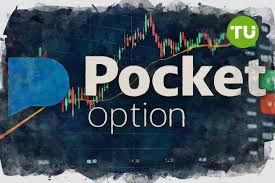
Trading Strategy with Envelope
The Envelope trading strategy is becoming increasingly popular among traders seeking a systematic method to make informed trading decisions. This approach utilizes envelope indicators that can be tailored to various timeframes and asset types, providing traders with valuable signals about potential market movements and price reversals. For an in-depth analysis and step-by-step guide, you can check out this Trading Strategy with Envelope https://trading-pocketoption.com/strategiya-envelope-na-15-minut/ resource, which covers the strategy in detail.
Understanding the Envelope Indicator
Before diving into the trading strategy itself, it’s crucial to understand what the envelope indicator is and how it functions. Essentially, the envelope indicator is a technical indicator that consists of two outer bands based on a moving average and set inflection points, often expressed in percentage terms from the moving average. The main purpose of this indicator is to represent potential overbought and oversold conditions in the market.
Components of the Envelope Indicator
The envelope consists of three primary components:
- Middle Line: This is usually the moving average (MA) of the asset’s price over a specified period. Commonly used MAs include Simple Moving Average (SMA) and Exponential Moving Average (EMA).
- Upper Band: A predetermined percentage above the moving average, signifying overbought conditions.
- Lower Band: A predetermined percentage below the moving average, indicating oversold conditions.
Setting Up the Envelope Indicator
To effectively utilize the envelope trading strategy, traders often follow specific steps in setting up the envelope indicator on their charting platform:

- Select the asset you wish to trade and the corresponding time frame.
- Apply a moving average (choose the duration based on your trading style; for instance, 20 periods for short-term trading).
- Add the envelope indicator, adjusting the percentage levels for the upper and lower bands (commonly set between 1% and 3%).
How to Trade Using the Envelope Strategy
The envelope strategy generally involves trading signals generated when the price crosses the upper or lower bands. Here are some basics for trading with the envelope indicator:
- Buying Signals: A potential buying opportunity is signaled when the price touches or crosses below the lower band. This indicates that the asset may be oversold, suggesting a possible upward reversal. Traders may consider entering a buy position around this point.
- Selling Signals: Conversely, a potential selling signal occurs when the price touches or crosses above the upper band, indicating overbought conditions. Traders might consider entering a sell position at this junction.
Confirmation Signals
While the envelope indicator provides useful entry and exit points, enhancing your strategy with additional confirmation signals can improve your trading success rate. Here are some confirmation tools you can incorporate:
- Momentum Indicators: Indicators like the Relative Strength Index (RSI) or Stochastic Oscillator can confirm overbought and oversold conditions, augmenting your trading decision.
- Price Action Analysis: Observing candlestick patterns can offer further context to entry and exit points suggested by the envelope indicator.
- Volume Analysis: Significant changes in trading volume may precede price movements, thus serving as an additional confirmation factor.
Risk Management in Trading with Envelopes
Implementing a robust risk management system is essential when using any trading strategy, including the envelope method. Here are several tips:
- Set Stop-Loss Orders: Determine a stop-loss order at a predetermined risk level to protect your capital against unfavorable market movements.
- Use Position Sizing: Calculate trade sizes based on your total account balance and risk tolerance to ensure you don’t overexpose your capital.
- Regularly Review Your Trades: Analyzing past trades helps identify what worked and what didn’t, allowing for adjustments to your strategy.
Common Mistakes to Avoid
As with any trading strategy, there are typical pitfalls traders may encounter when utilizing the envelope strategy:
- Ignoring Market Trends: The envelope strategy may be less effective in ranging markets, and traders should always assess broader market conditions.
- Overtrading: Patience is crucial. Waiting for quality setups will yield better results than taking multiple trades based on minimal criteria.
- Neglecting Economic News: Major economic announcements can significantly impact price movement, which can invalidate envelope signals.
Conclusion
The envelope trading strategy offers a clear and systematic approach for traders looking to identify potential entry and exit points in the market. By employing this strategy with proper risk management techniques and confirmation tools, traders can potentially enhance their market performance. Always remember that consistency and discipline are pivotal in trading, so practice using the envelope strategy to find what works best for your individual trading style.
